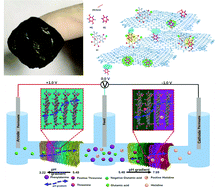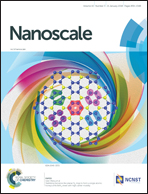Functional reduced graphene oxide-based membranes with selective ion transport channels for zwitterionic ions separation based on the pH gradient†
Abstract
In this work, we report a method for the fabrication of a functional free-standing graphene membrane (FFGM) with high mechanical strength, enlarged interlayer spacing and ion channels for zwitterionic ions separation. To obtain the FFGM, the anionic dye Eosin Y (EY) was introduced into a graphene oxide (GO) and hydroquinone (HQ) mixture to prepare functional graphene-based membranes on Cu foil using simply a drop-casting method. In comparison with a GO membrane, the molar flux and the mechanical strength of the FFGM were dramatically increased. The FFGM was then equipped on custom-built glass reservoirs for zwitterionic amino acids (AAs) separation based on the inner pH gradient, which was formed by controlling H+ and OH− (in the feed and receiver solution) migration in rGO/GO sheets via an external electric field. With the help of the inner pH gradient and external electric field, AAs could change their charge behaviors. The ionized AAs transport through the FFGM and finally separation was realized.



 Please wait while we load your content...
Please wait while we load your content...